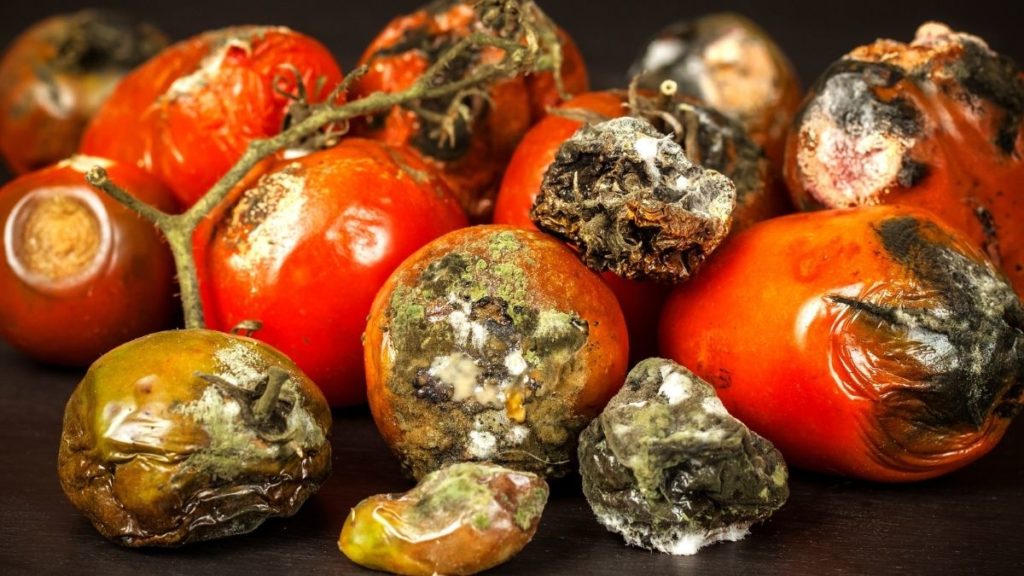
Key Points:
- Food spoils because of microbes, enzymes, air, light, insects, physical damage, temperature, and time.
- Signs of food spoilage include discoloration, foul smells, mold, etc.
- Eating spoiled food can lead to illness, and in some cases, death.
- Older adults are most susceptible to food poisoning from spoiled food.
- Food spoilage can be reduced through proper food storage and avoiding questionable foods.
- Freeze-dried foods are an option for buying off-the-shelf food with the longest shelf life.
Knowing why food spoils will help if you’re preparing for the day when the SHTF. Imagine the actual event happens and you think you’re sitting pretty. You’ve done everything you knew you should do and have enough food, shelter, water, and energy sources. Your whole family is convinced they have to all work together and you’re going to be an invincible force in your neighborhood.
Then it’s time to prepare lunch using your solar cooker, which you have used hundreds of time before. Your wife goes to get the food to prepare some rice and beans along with a little protein and fruit.
Then she lets out an unexpected scream. You rush to her side and find that the tubs of food are contaminated with little weevils of some sort. Yuck!
The amount of money you spent on the food was a sacrifice when you purchased it. And now, the question is what to do and how to prevent food spoiling in the future.
Table of Contents
Why Food Spoils
According to the Institute of Agriculture and Natural Resources, food spoilage is no accident. If you have food, you can and should expect it to spoil.
Food is under attack constantly from eight different sources:
- Microbes
- Enzymes
- Air
- Light
- Insects, Rodents, Parasites and Other Creatures
- Physical Damage
- Temperature
- Time
Thus, controlling for each one of these in your stored food is imperative.
Microbes Cause Food Spoilage
Not only do microbes spoil food but they also can cause food-borne illnesses. Your refrigerator and freezer don’t allow most microbes to grow well, and if these appliances are on the fritz or not hooked up to an energy source when the SHTF, there’s a chance that microbes will be growing in your food. Every refrigerator and freezer needs a thermometer to make sure temperature is staying colder than 60 degrees and lower than 40 degrees Fahrenheit.
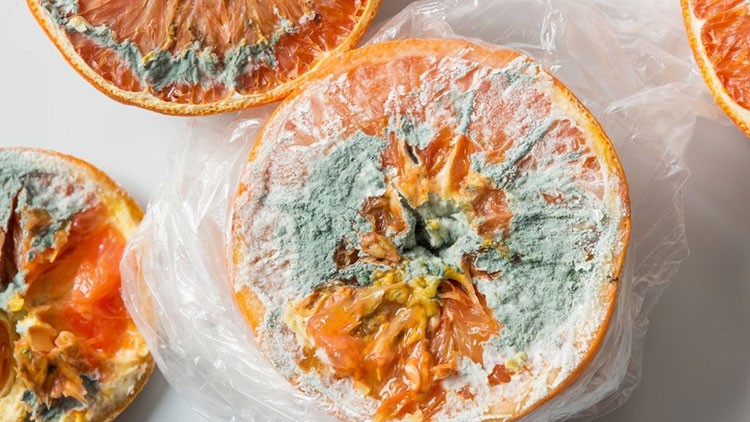
What are the Signs of Food Spoilage?
Foods that are contaminated with microbes don’t have to look bad, taste bad, or smell bad to be bad. Foods can contain infectious microorganisms which set up shop in your intestines and begin reproducing, or they can contain toxins formed by bacteria. In the latter case, you don’t consume the live microorganism but the toxin itself.
When you can see signs of food spoilage, they will include:
- unpleasant odors coming from the food such as in dairy products
- unpleasant tastes of the food
- mushy or slimy fruits and vegetables
- bruised parts of fruits on the inside of the fruit
- meat that turns brown and smells
- fish that smells very fishy or worse
- meat or cheese that feels soggy or has a sheen on it
- mold on food
- discoloration on the food
- wrinkly skin on fruit
- frozen foods covered in frost may be spoiled so check them carefully
- eggs that rise to the top of a bucket of water
- bulging cans or lids or broken seals in canned or bottled food
- tiny bubbles in the jar
- hummus or yogurt that starts to form large amounts of liquid
- contents of a can spurt out when a can is opened
- when you open a can, it looks like the liquid portion of it has diminished
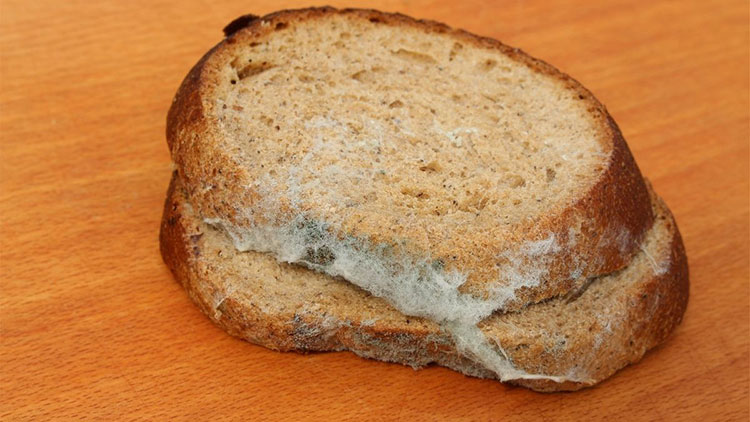
What Happens When You Eat Spoiled Food?
What are the results of eating spoiled food? Although there is no way to ethically get people to eat spoiled food and then test them to see what happens, you will hear of people that ate spoiled food and paid the consequences. Two stories come to mind.
The first is one read several years ago. A family was destitute and came across an abandoned home with some food in the cabinets. They decided to use the pre-packaged pancake mix. The mix didn’t look spoiled in any way but was past the expiration date. The whole family ended up dying of mold poisoning from mold contamination in the pancake mix, forensic examiners revealed.
The second is the case of a farmer in northern California. He brought organic produce to his customers over a large region and boxed it up weekly for customers. He was often faced with extra produce that he didn’t know what to do with, and considered that since it was organic, the molds growing on it must be all right. They weren’t. He developed liver cancer that spread to multiple organs and was aggressive. It took his life.
One of the molds that causes liver cancer is Aspergillus. This mold often contaminates nuts, especially peanuts. Corn, rice and wheat are also often contaminated with aflatoxins produced by Aspergillus molds.
Julia R. Barrett, researcher on Aspergillus and aflatoxin outbreaks, reported in 2005 in the Environmental Health Perspectives Journal that chronic low level exposure to aflatoxins is associated with increased risk of developing liver cancer, impaired immune function and malnutrition. If someone is exposed to high levels over a short period of time, they may suffer from appetite loss, malaise and low fever and then later on, vomiting, abdominal pain, hepatitis and potentially fatal liver failure.
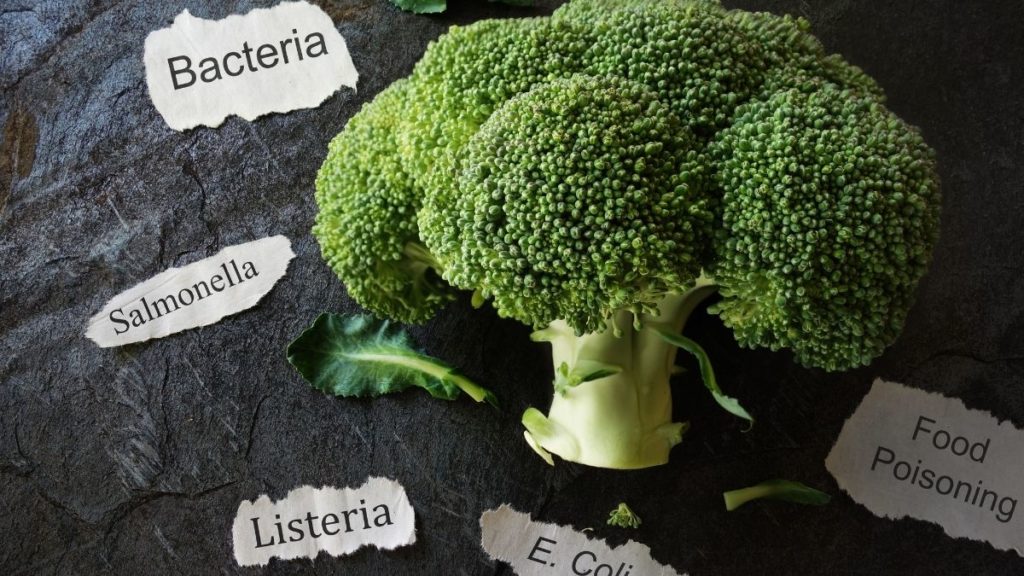
Who is More Susceptible to Foodborne Illnesses?
Foodborne illnesses include Campylobater, E. coli O157, Listeria monocytogenes and Salmonella, as well as others. These are diseases that cause diarrhea and other symptoms. And when it comes to susceptibility to infections that affect the GI tract, it’s older adults – those older than 65 years old – that are more susceptible than younger adults.
Older adults are also more likely to die of these types of infections. This is due to any of the following reasons:
- weakened immune system
- GI system changes
- higher prevalence of other health conditions
- use of immunosuppressants
- use of antacids
These types of infections are more common than what most people realize. Check out these statistics on the incidence of them between 1996 and 2012:
- 21,405 confirmed infections among adults 65 years old and over
- 10,413 cases of Salmonella
- 9,229 cases of Campylobacter
- 1,007 cases of Listeria
- 756 cases of E. coli O157
- Overall, 49.3% of ill adults aged 65 years and older with these infections were hospitalized.
The percentage of those who died was almost 10 times higher for those with Listeria infections.
As you can see, foodborne illnesses can be a big problem.
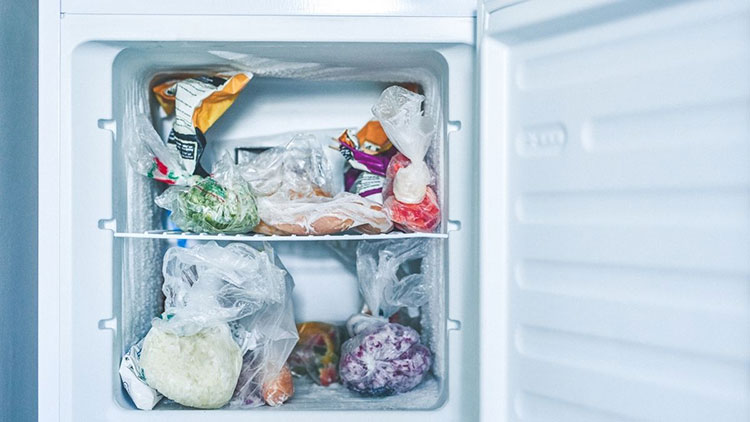
11 Ways to Prevent Food from Going Bad
Here are some of the best ways to prevent food from going bad:
- Food in, food out. As soon as food arrives on your order, label it. Then use the principle, what came in first is used first. This will help you use the oldest food first.
- Don’t freeze food that is already contaminated. Freezing makes bacteria go dormant but does not kill them. When the food is thawed, you’ll face large amounts of bacteria in the food.
- Remember that most bacteria are killed at temperatures over 60 degrees Centigrade (that’s around 130 degrees Fahrenheit).
- Address the acidity of food to preserve it by using chemical preservatives such as vitamin C.
- Deprive foods of oxygen by vacuum packing them, canning, or smoking them.
- Remove moisture from foods by dehydrating them, salting them, sugaring them, or using diatomaceous earth (food grade) as a preservative agent.
- Consider combining two or more techniques of food preservation. For example, freeze drying involves freezing, drying and oxygen deprivation. Salted fish canning involves salting and oxygen deprivation. Canning involves heating and oxygen deprivation.
- High risk foods for food spoilage such as meat and poultry can be made safer by not slicing or mincing the meat, keeping it covered, keeping it as dry as possible and keeping it at a good refrigerator or freezer temperature.
- Follow the general rule after cooking: Keep hot food hot and keep cold food cold. Store leftovers carefully. If in doubt, throw it out.
- Don’t taste canned food that is questionable.
- Don’t re-freeze thawed food.
Following these tips will help make sure that the food you are storing for prepping purposes, or even everyday kitchen use, will last as long as possible.
Freeze-Dried Foods as an Option
We have written about how to store pasta, how to store rice, even how to store coffee. This is all important information for preppers to know, and when properly stored, the foods can last a very long time.
However, sometimes there is a value in spending extra to save time and effort. Alternatively, there can be value in adding diversity to food storage techniques, and when it comes to long-term food storage, it’s hard to beat food with a 30-year shelf life. This is where freeze dried food comes in (see our guide).
Some of the top freeze-dried food dealers include the following:
- Augason Farms
- Emergency Essentials
- Legacy Food Storage
- My Patriot Supply
- Ready Store
- Ready Wise
- Valley Food Storage
See our bulk survival food deals page for more retailers.
References
3rd Lecture. Signs of Food Spoilage. SlideShare A Scribd company. Health & Medicine. Oct. 20, 2015.Accessed online July 15, 2021. https://www.slideshare.net/waleedfoad/3rd-lecture-signs-of-food-spoilage-54186694
How Food Spoils. Institute of Agriculture and Natural Resources. University of Nebraska-Lincoln. Accessed online July 15, 2021. https://food.unl.edu/how-food-spoils
Barrett, Julia R. Liver Cancer and Aflatoxin: New Information from the Kenyan Outbreak. Environ Health Perspect 2005 Dec; 113 (12): A837-A838. https://www.ncbi.nlm.nih.gov/pmc/articles/PMC1314947/
Scallan, E., et al. Bacterial enteric infections among older adults in the United States: Foodborne diseases active surveillance network, 1996-2012. Foodborne Pathog Dis 2015 Jun;12(6):492-499. https://www.ncbi.nlm.nih.gov/pmc/articles/PMC4630801/
